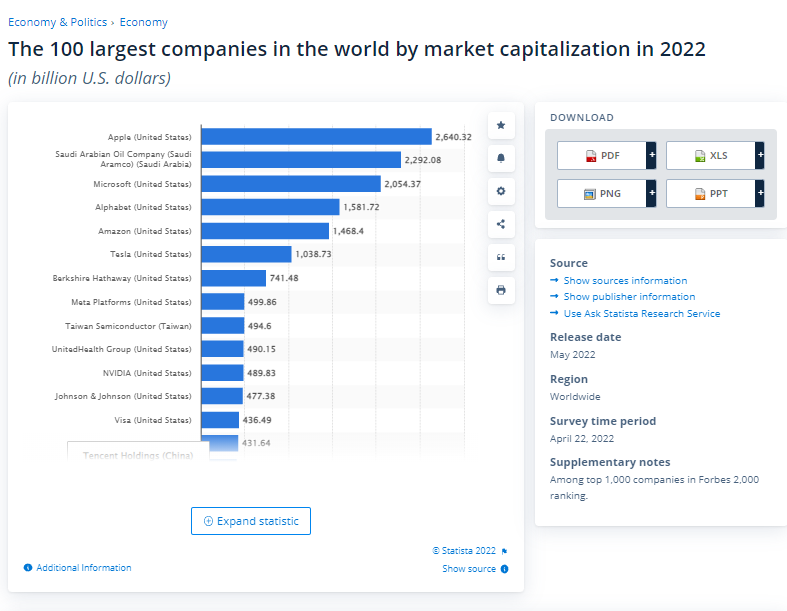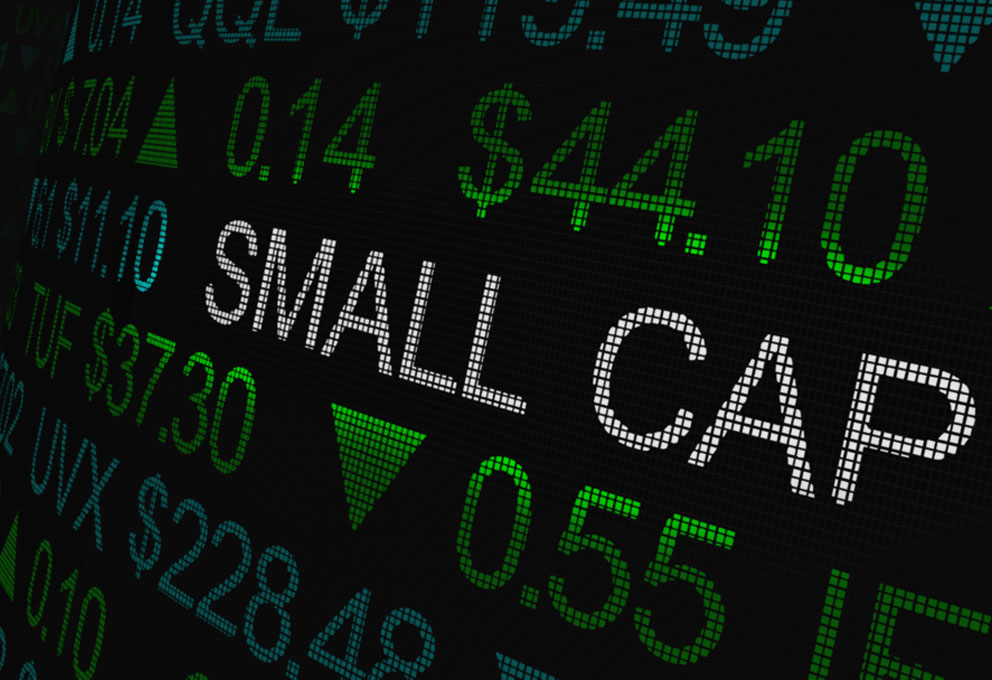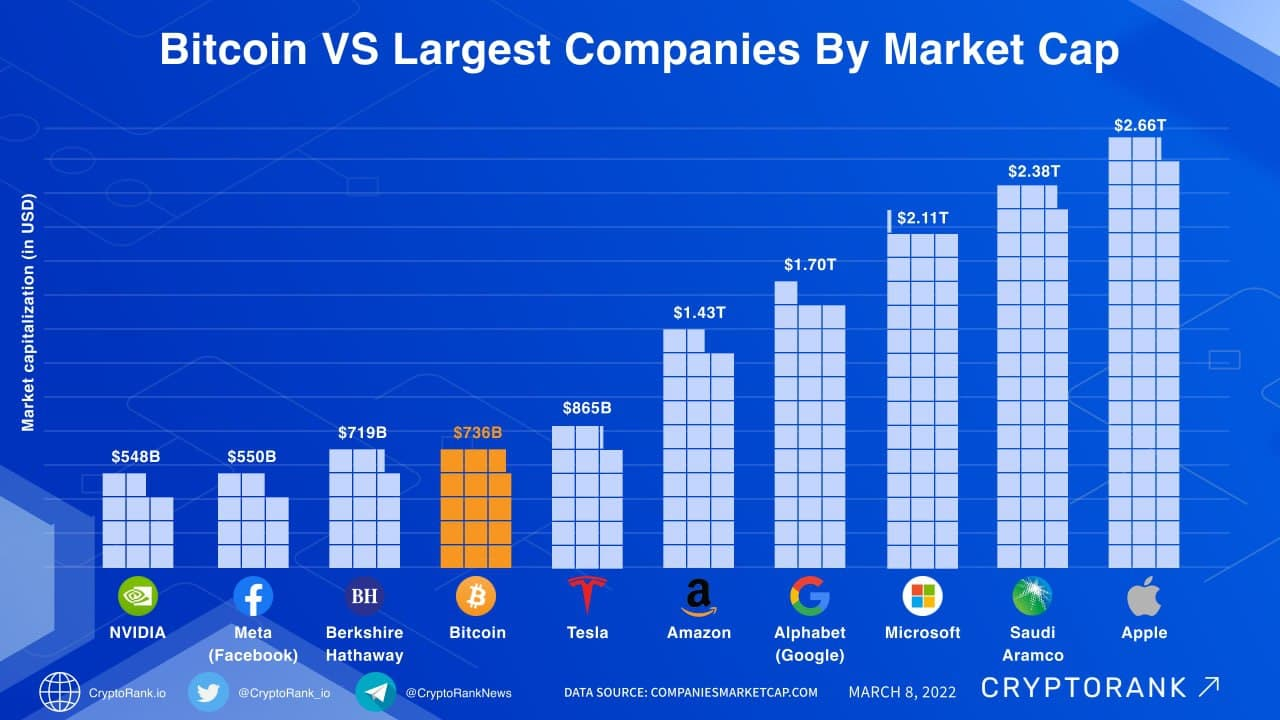When you hear the term “market capitalization,” it may not register because the word “capitalization” sounds so technical. But market capitalization is actually a very straightforward measure of a company’s stock value. In this article, we will look at what market capitalization is, how it is calculated and why it is important when analyzing a company as an investment opportunity.
Let’s take a closer look at what market capitalization means and how to use it as an investor.
What is market capitalization?
Market capitalization is a measure of the value of a company’s shares. It is calculated by taking the total number of shares outstanding and multiplying them by the current market price of one share. Market capitalization is used to rank the size of companies and their stocks. This can be helpful when you’re trying to compare two companies that operate in the same industry but have different levels of profitability. The market capitalization of a company is calculated by multiplying the total number of shares outstanding by the current share price. Large-cap, mid-cap or small-cap? This refers to the size of the company. Large-cap companies are typically large, multinational corporations with a market capitalization of more than $100 billion. Mid-cap companies are those with a market capitalization between $2 billion and $10 billion. Small-cap companies are those with a market capitalization of less than $2 billion. The market cap of a company is an important factor to consider when investing in stocks. It is helpful when you are trying to compare two companies with different levels of profitability but that operate in the same industry.
Are market caps important?
As a quick and dirty way to compare companies when you are evaluating investing opportunities, market cap is useful because it is easy to calculate and understand. Market cap is a useful metric for investors because it is a simple formula that can be calculated without too much effort. For example, let’s say you want to learn more about a company called “Mega Corporation.” You go to the stock page on their website, and you see that one share of their stock is trading at $10. Let’s say the total number of shares outstanding is 10 million. If you put all of that information into the market cap formula, you would come up with a market cap of $100 million for the company.
When it comes to stocks, market capitalization (or “market cap”) is an important metric to pay attention to. Market cap is the value of all the shares of a company’s stock, and it gives you an idea of how big the company is. There are three main categories of market cap: large cap, mid cap, and small cap. Large cap stocks are the most valuable, with a market cap of over $10 billion. These are usually well-established companies with a history of strong performance. Mid cap stocks are worth between $2 billion and $10 billion.
These are usually growing companies that are starting to gain attention from investors. Small cap stocks are worth less than $2 billion. These are usually newer companies that are still relatively unknown. While market cap is a helpful metric, it’s not the only thing you should look at when considering an investment. You should also look at the company’s financials, its competitive landscape, and its growth prospects. But market cap can give you a good starting point when you’re doing your research.
Limitations of market cap analysis
Market cap is useful for comparing companies with different levels of profitability. Therefore, it is a helpful way to analyze stocks as investment opportunities. However, market cap analysis has some significant limitations. – It doesn’t tell you how much money the company is making – Market cap is a useful metric for comparing companies with different levels of profitability. Therefore, it is a helpful way to analyze stocks as investment opportunities. However, market cap analysis has some significant limitations. It doesn’t tell you how much money the company is making. It only tells you the value of a company’s shares based on the number of shares outstanding and the current stock price. – It doesn’t tell you how much cash the company has – Market cap is useful for comparing different companies, but it also has some limitations on a more individual basis. For example, it doesn’t tell you how much cash the company has on hand, just the value of their shares based on the number of shares outstanding and the current stock price. – It doesn’t tell you about the company’s debt – Another thing market cap doesn’t tell you is how much debt the company has. While this isn’t as important for analyzing a company’s stock as the profits or the cash flow, it is still something that should be considered when making an investment decision.
What is market value vs price?
The market value of a stock is the price that a willing buyer and willing seller agree to on the open market. The market capitalization value is the total market value of all the outstanding shares of a company. The market value is what someone is willing to pay for the stock, and the market capitalization value is the total value of all the shares.
Where do you find a company’s market capitalization?
There are a few different places you can find a company’s market capitalization. The most common place to find this information is on a stock exchange’s website. You can usually find it under the “Quotes” or “Market Data” section. Another place you can find this information is on the company’s website. Usually, you can find it in the “Investor Relations” section. Finally, you can also find this information on financial news websites like Bloomberg or CNBC.

Small Cap Companies and Large Cap Companies
The size of a company is often determined by its market cap. Small cap companies have a market cap of less than $2 billion, while large cap companies have a market cap of $10 billion or more. It is important to understand the difference between large and small cap companies when you are looking at investing in stocks. This can be helpful when you are trying to compare companies with different levels of profitability but that operate in the same industry. If you are comparing companies with the same level of profitability, the difference in size will provide you with some additional insight. Small-cap companies tend to be riskier investments than large-cap companies because they are still growing and have yet to prove themselves. Because of this risk, small-cap companies may provide investors with a higher rate of return on their investment than large-cap companies. The higher rate of return may come from growth in the company’s profits as well as from an increase in their stock price. Large-cap companies, on the other hand, tend to be more predictable and less risky investments.
Are mid cap companies a good option too?
If you’re looking for an investment with potential for rapid growth, mid cap companies are a great option. These companies have a market cap that falls between $2 billion and $10 billion, making them larger than small cap companies but smaller than large cap companies. This gives them the potential to offer investors higher returns than large cap companies without the same level of risk.
Mid cap companies are also a good option if you’re looking for diversification in your investment portfolio. They tend to be less affected by market fluctuations than large cap companies, so they can help to balance out your portfolio.
Of course, as with any investment, there are risks involved. Mid cap companies can be more volatile than large cap companies, and they may be more susceptible to economic downturns. However, if you’re willing to accept these risks, mid cap companies can offer the potential for high returns and diversification in your investment portfolio.
But… Why small cap companies are better?
Small cap companies are known for their ability to serve niche markets. This is because they are nimble and can quickly adapt to changes in the market. They are also less likely to be impacted by a business or economic downturn.

Another reason small cap companies are better is because they are often run by passionate entrepreneurs. These individuals are driven to succeed and are always looking for new ways to grow their businesses. This makes small cap companies more innovative and dynamic.
Finally, small cap companies typically have a lower cost of capital. This means they can invest more in research and development, which leads to new products and services.
If you’re looking for an investment that has the potential to generate high returns, then small cap companies are a great option.
Market cap vs. profitability
Market cap and profitability are two different things. One way to think about this is that a company’s profitability is like the amount of cash they make. A company’s market cap is like the price of the company on the stock market. Obviously, the two things are related. A company’s market cap is determined by adding up the profit they make and then dividing that number by the number of shares they have outstanding. Nevertheless, they are two different things to keep in mind when analyzing a company as an investment opportunity.
If you see that one company has a high profit margin but a low market cap, and a different company has a lower profit margin but a higher market cap, the high market cap company may be a better investment. Remember, though, that market cap is not the only thing you should be looking at. You also want to consider the company’s future prospects as well as its financial health.
What are market cap ranges ?
Market cap ranges are the different categories that stocks are divided into based on their market capitalization. The three main categories are large cap, mid cap, and small cap. Large cap stocks have a market cap of over $10 billion, while mid cap stocks have a market cap of $2-10 billion. Small cap stocks have a market cap of under $2 billion. Micro cap stocks are even smaller, with a market cap of under $300 million.
Why does market capitalization matter? Market cap is one of the most important factors in determining a stock’s risk. Large cap stocks are generally less risky than small cap stocks, because they are more established and have a larger market share. However, small cap stocks often have more room for growth, making them more exciting for investors.
When choosing stocks, it’s important to consider your investment goals and risk tolerance. If you’re looking for stability, large cap stocks are usually a good bet. If you’re willing to take on more risk for the chance of higher rewards, small cap stocks may be a better choice.
No matter what kind of investor you are, it’s important to be aware of the different market cap ranges. Knowing where a stock falls
Final Words
Market cap is one of the most basic ways to compare the size of companies in different industries. While it does have some limitations, it is a helpful metric to keep in mind when you are analyzing the stocks of different companies as investment opportunities. When you are trying to figure out which companies are the best investment opportunities, it can be helpful to compare companies with different levels of profitability but that operate in the same industry. Market cap is a useful metric for doing this because it is easy to calculate and understand.



